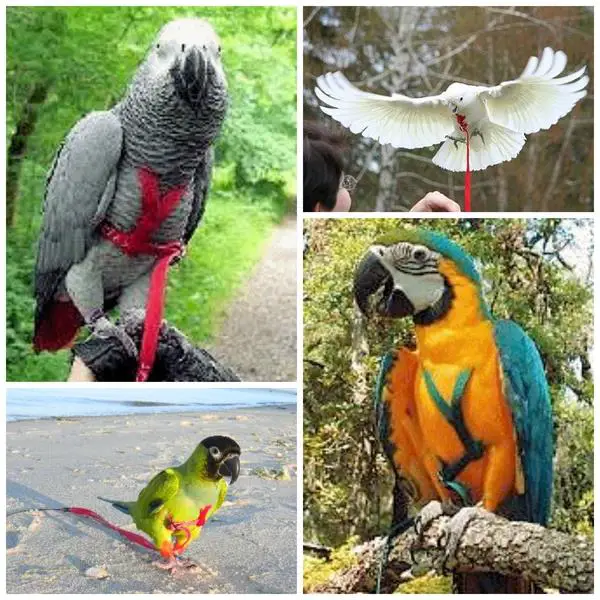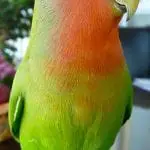A bird leash is something similar to a dog leash where it is attached to your bird pet that enables them to be taken outdoors without the risk of losing them, giving them a chance to escape. A bird that is not trained to use it may just aggressively bite it because they don’t like to wear it while a bird that is trained to use it enjoys its benefits. Bird leash comes in different sizes that can accommodate all sizes of birds, but is it convenient to use a bird leash?
The use of a bird leash is convenient if you would want to play or train your bird outdoors. There are also a lot of benefits of a bird leash in terms of the physical, emotional, and social aspects. As long as you would choose the right one for your bird, it will truly be beneficial and that you can maximize its use.
Benefits of Using a Bird Leash
- Your parrot can experience a change in an environment outside their cage safely without the fear that they may fly away from you.
- Since your parrot does good in a crowd, they can be active to give them the feeling that they are in a flock.
- You can let your parrot breathe fresh air so as to increase the oxygen level in their body.
- Giving them time outside will let them experience how to spend time in their natural habitat in the wild.
- When you often give your bird time out of the cage with the use of a leash, they can explore different things that will not give them boredom, stress, and frustration.
Drawbacks of Using a Bird Leash
- The use of a bird leash is quite complicated for small birds because they might feel that it is bulky for them.
- Pulling off the harness when it is being used by the bird is more difficult than putting it in.
- There is a danger that your bird will fly if you accidentally drop the leash.
- There are types of leash and harness that are not comfortable, so be sure to have research about the top of the line leash and harness for birds.
Is There a Need To Leash Training your Bird?
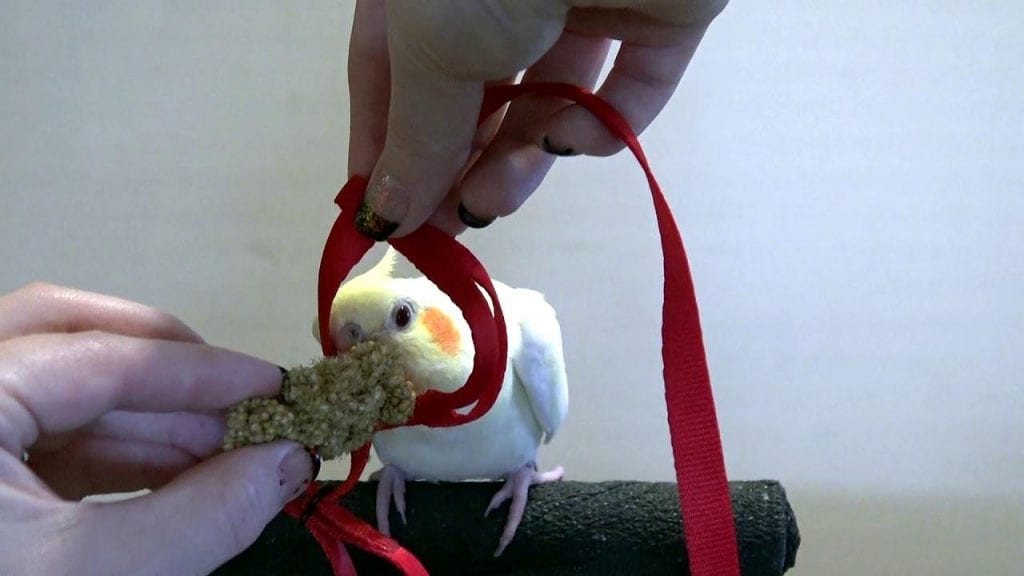
Conducting leash training to your bird before fully introducing it to them is a must to avoid any harm to your bird while it is being used. It is ideal for training them while they are still babies. Experts suggest that the ideal time to train them before they fully developed feathers and make sure that you are hand feeding them once in a while so they’ll get used to your touch because if you would wear them the leash, you need to hold them.
If your bird is not fully acquainted with touch, you may have a hard time wearing them a leash, so training is an important aspect. Wearing them a leash seems to be an easy task, but if it is done incorrectly, it may impose fear to your bird or worst you might lose is during a flight with an incorrectly installed leash.
Tips in Using a Bird Leash
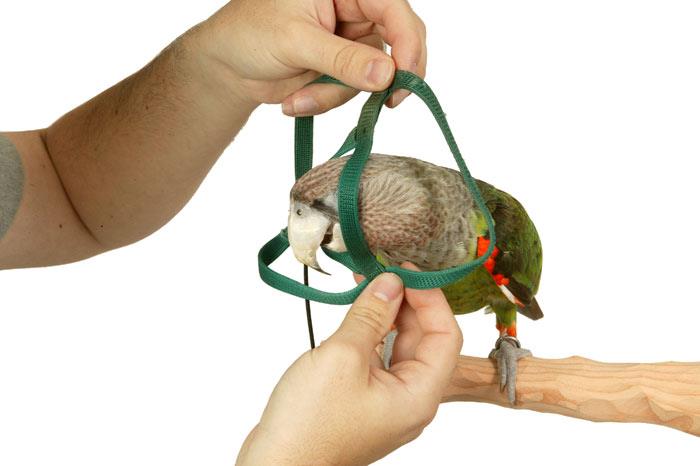
- Even if you are already using a bird leash, there are high risks that your bird will escape, especially if the leash loop is not securely attached to your wrist or into something. If you plan to hold it, make sure that it is properly looped into your wrist, or if you plan to leave it in an area, make sure that it is securely tied.
- You may need great patience if you decide to train your bird with the use of a bird leash during their adult years, so as much as possible, start training before they fully developed all their feathers.
- Use the right size of leash and harness that is suitable for the size of your bird. There is a possibility that you’ll hurt your bird if you use the wrong size. With the use of the size that best suits them, they can be comfortable and that they can easily link the use of a leash to good associations.
- Your training session should be done indoors, so if something goes wrong, your bird is still securely kept within your vicinity.
- The bird’s body is fragile, in wearing the leash and harness on them, make sure that it is snug but not too tight, your finger must still be able to snug in.
- If you bring your bird somewhere with the possibility of a predator sighting, don’t leave it alone.
How to Leash Train, your Bird?
Step1: The first step is to let your bird see the harness. You may place it just outside their cage enough for them to see it properly. Do not place it inside because the leash can turn into shreds. Choose a leash that has the same color as its feathers.
Step 2: For them to accept the leash easily, lay it first across their back; if there are no signs that they are refusing it say the words, good job or well done, then give them treats. Do this for a couple of days or weeks until they associate the leash into treats. You can also do leash training before their feeding time, so there is something that they look forward to. Your main goal is to ensure that your bird will not associate negative thoughts about the leash.
Step 3: When the bird feels comfortable with the presence of a leash and harness, start wearing it to them. Make sure that you are doing it gently so as not to hurt them. As soon as they successfully wear the harness and leash, try to walk them around your house so that you can check if it fits them well and if the snaps are properly locked. If you would take them outside, hold the loop of the leash properly so it won’t fly away.
How to Choose a Bird Leash?
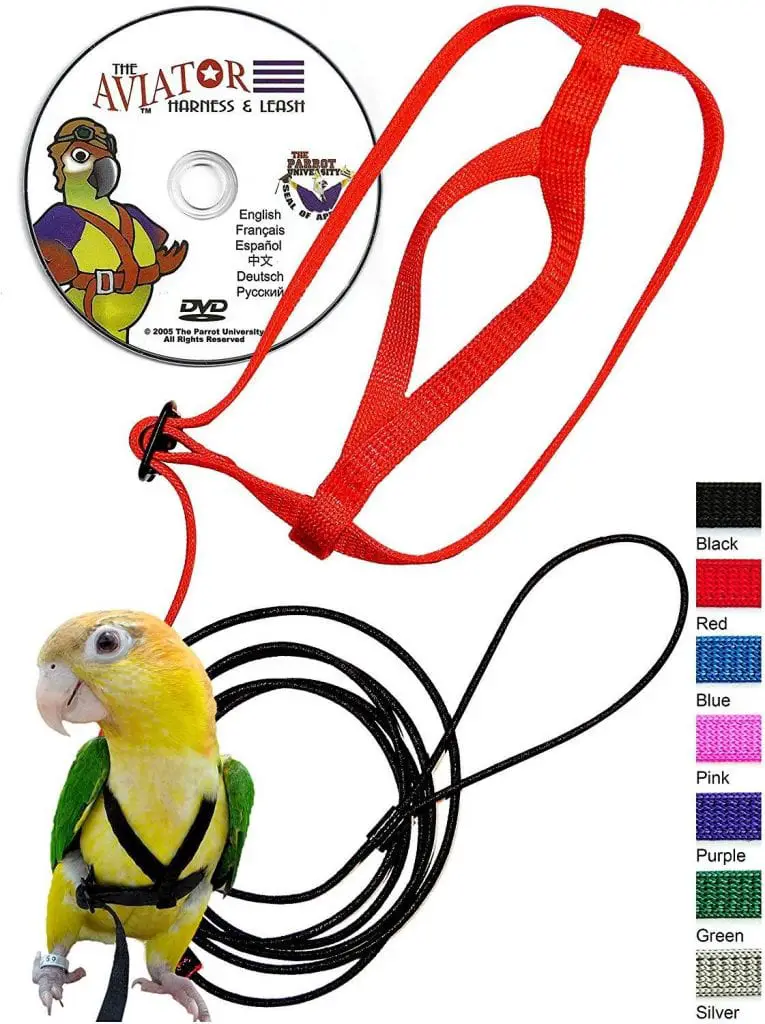
In choosing for a bird leash, make sure that it is sturdy and lightweight. It should be of the right size to complement the body’s dimensions of the bird so it can still move freely but, at the same time, restraining them from flying away through the leash and harness. The chest area, as well as their wing part, is where you would install the harness and leash so it is important that they will be comfortable and will not cause any irritations that is why you also need to check the material of the harness, make sure that it is not too stiff. If it has metal locks, clips or fasteners, make sure that it doesn’t pull your bird’s feathers.
Final Thoughts
A bird leash is one of the must-have accessories for the bird. It will not only make sure that your bird is restrained from escaping, but it teaches the bird to explore to further enhance their self-confidence. If you find time to play with them outside their cage, they’ll be happier and healthier to be a better pet for you. Keep in mind that if they wore it, you should still need to give them your full attention because there are still a lot of dangers outside their cage.
